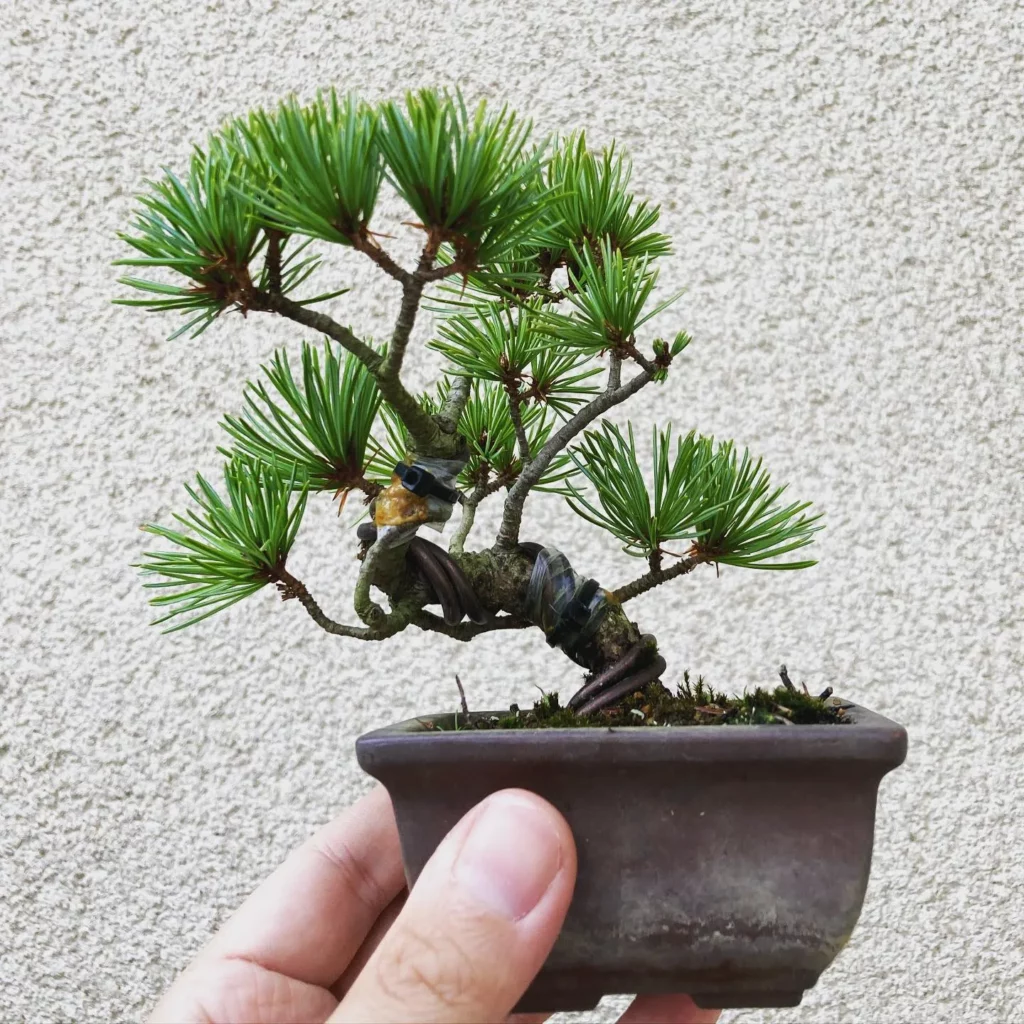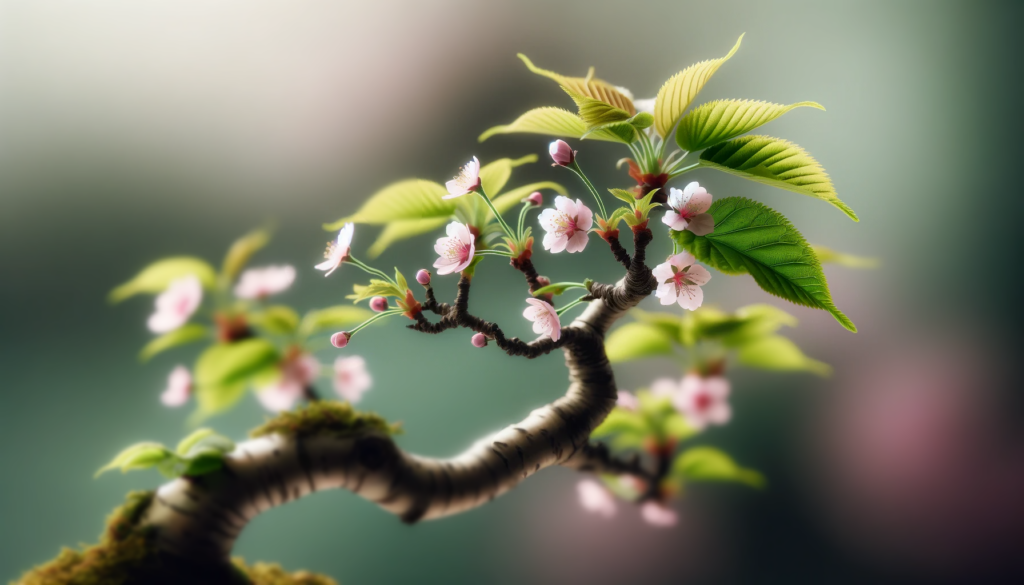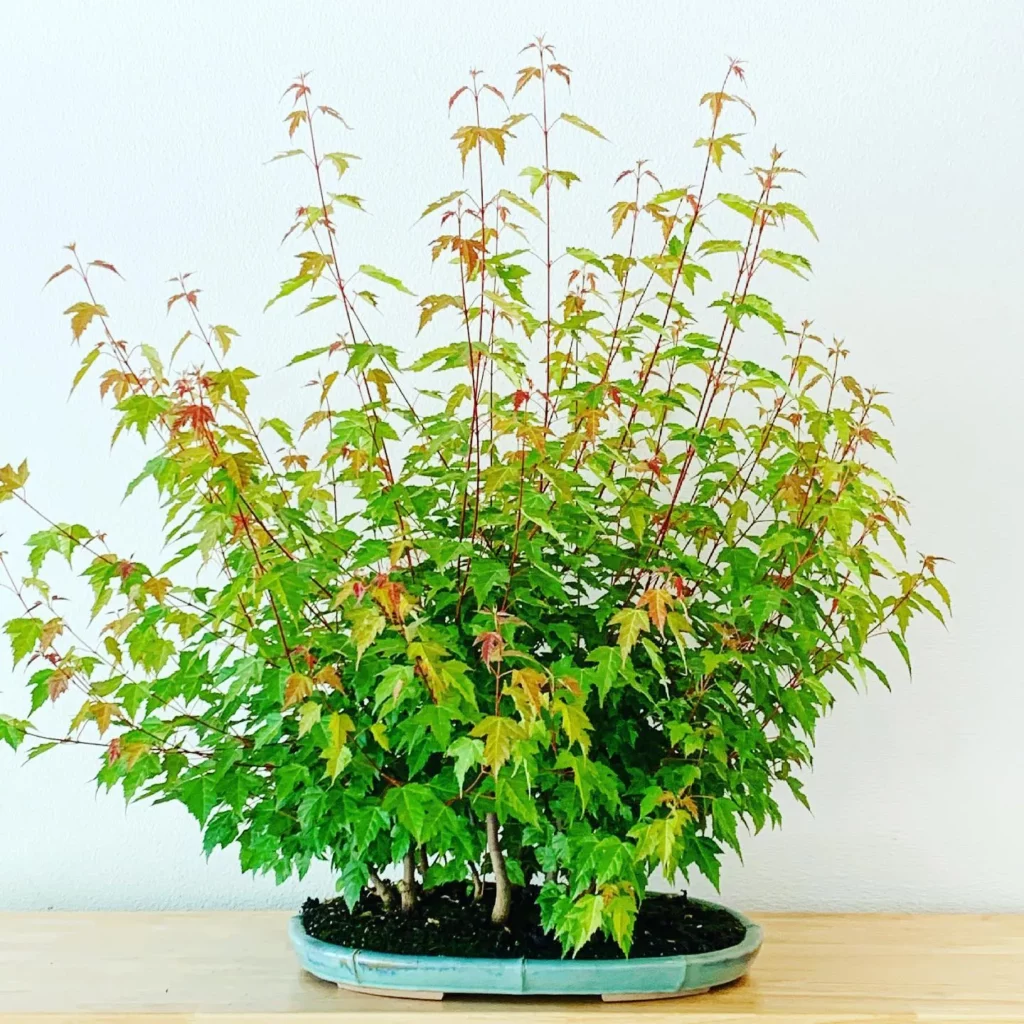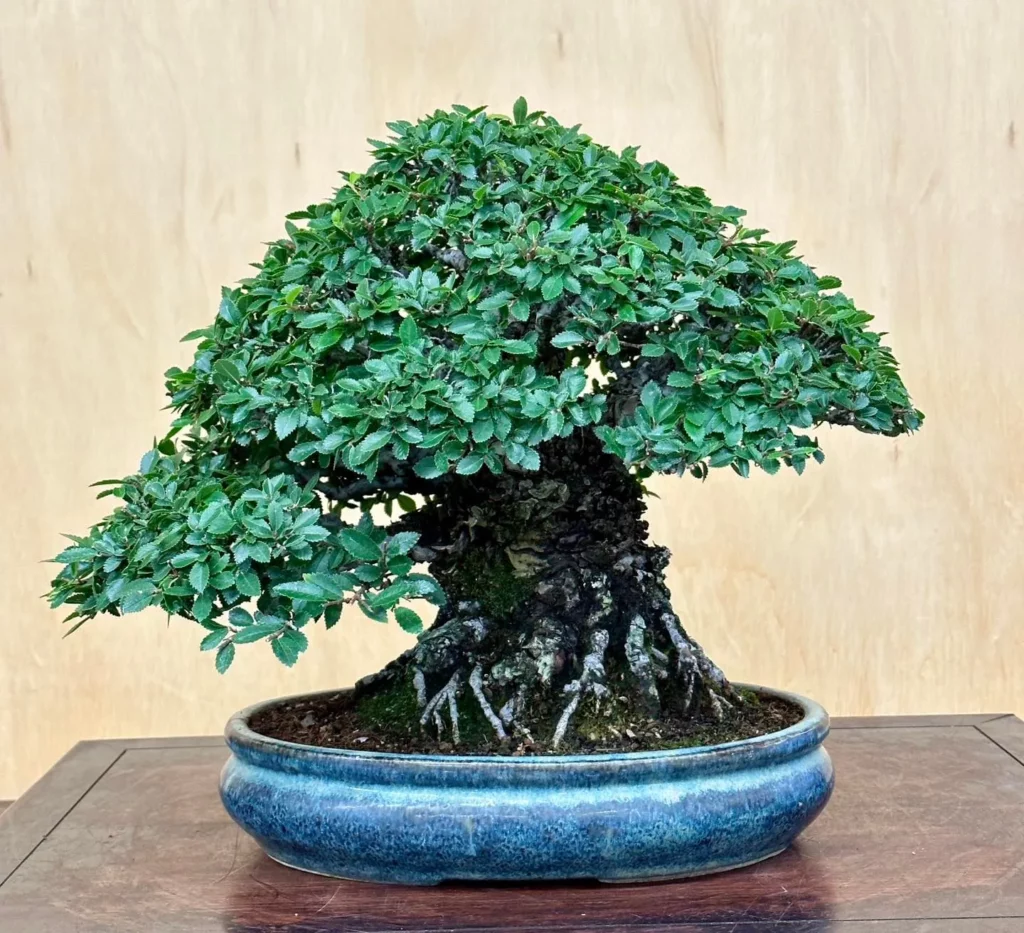Welcome to our guide on Witches Broom Bonsai, a fascinating style that adds a touch of enchantment to your bonsai collection. Whether you’re a seasoned bonsai enthusiast or just starting out, understanding and treating Witches Broom Bonsai is essential to create stunning and unique designs. In this article, we’ll explore the origins of this style, its application to various species, and the techniques to care for and maintain these captivating bonsais. Let’s dive into the world of Witches Broom Bonsai and unlock the secrets of its growth and beauty.
Choosing the Right Soil and Pot for Witches Broom Bonsai

When it comes to cultivating Witches Broom Bonsai, choosing the right soil and pot is essential for the health and growth of your miniature tree.
The soil you select should be well-draining to prevent waterlogging and root rot. It is recommended to use a free-draining bonsai mix that allows excess water to flow through easily. This type of soil will ensure proper aeration while retaining enough moisture for the bonsai’s needs.
When it comes to choosing the pot, size matters. The pot size should be carefully considered to support optimal growth and prohibit overwatering. A good rule of thumb is to select a pot with a diameter equal to about two-thirds to three-fourths of the crown’s width. This provides adequate room for the root system while preventing excessive water retention.
No products found.
For Witches Broom Bonsai, clay or ceramic pots are recommended. These materials promote good drainage and allow for proper air circulation around the roots. On the other hand, it is best to avoid plastic pots as they can inhibit drainage and trap excess moisture, potentially leading to root problems.
- Choose well-draining bonsai soil to prevent waterlogging and root rot.
- Select a pot with a diameter that is about two-thirds to three-fourths of the crown’s width.
- Opt for clay or ceramic pots for good drainage and air circulation.
- Avoid plastic pots that can hinder drainage and retain excessive moisture.
Proper Watering and Fertilizing for Witches Broom Bonsai

Proper watering and fertilizing are essential for the growth and health of your Witches Broom Bonsai. To ensure optimal growth, there are a few key aspects to consider.
Watering
The frequency of watering your Witches Broom Bonsai will depend on various factors including the environment, pot size, soil type, and tree species. As a general rule, it is important to water your bonsai thoroughly when the top inch of soil has dried out. This will prevent overwatering and help maintain a good balance of moisture.
- Check the moisture levels by inserting your finger about an inch into the soil. If it feels dry, it’s time to water the bonsai.
- Water your bonsai gently and evenly, allowing the water to penetrate into the soil and reach the roots.
- Avoid watering too frequently as it can lead to root rot. Conversely, underwatering can cause the bonsai to dry out. Finding the right balance is key.
Fertilizing
In addition to proper watering, fertilizing is crucial to provide your Witches Broom Bonsai with the essential nutrients it needs for healthy growth. Consider the following tips for fertilizing your bonsai:
- Use a balanced bonsai fertilizer that contains nitrogen, phosphorus, and potassium, as well as trace elements. This will ensure that your bonsai receives a well-rounded nutrient supply.
- Choose between organic or synthetic fertilizers based on your preferences and the specific needs of your bonsai.
- Fertilize your Witches Broom Bonsai during the growing season, typically from spring to early autumn.
- While fertilizing is important, it’s crucial not to over-fertilize your bonsai. Follow the instructions on the fertilizer packaging and avoid applying excessive amounts, as this can damage the tree.
Pruning and Shaping Techniques for Witches Broom Bonsai

Pruning plays a vital role in maintaining the health and shape of your Witches Broom Bonsai. It not only encourages new growth but also helps prevent disease and pest infestations. By using sharp pruning tools such as concave branch cutters, scissors or shears, root pruners, and wire cutters, you can effectively shape your bonsai and maintain its desired size and form.
Shaping techniques are equally important for creating a visually appealing Witches Broom Bonsai. Wiring branches into specific shapes allows you to guide the growth and achieve the desired structure. Additionally, pruning for directional growth helps maintain the overall aesthetic appeal and balance of your bonsai tree.
Pruning Tips for Witches Broom Bonsai:
- Regularly inspect your bonsai for any dead or unhealthy branches and remove them using proper pruning techniques.
- Trim back vigorous growth to promote balance and maintain the desired shape of the tree.
- Avoid pruning during periods of active growth to prevent excessive stress on the tree.
- Consider using wound sealant or bonsai paste on larger cuts to aid in healing and reduce the risk of infections.
Shaping Techniques for Witches Broom Bonsai:
- Use wire to gently guide the branches into the desired position, taking care not to damage the bark.
- Regularly check the wire for any signs of cutting into the bark, and remove or reposition it as necessary.
- Prune back branches that are growing too long or out of proportion to maintain the overall balance and aesthetic appeal.
- Consider using guy wires to enhance the shaping process by providing additional support to certain branches or trunks.
Common Pests and Diseases in Witches Broom Bonsai
While Witches Broom Bonsai is relatively low-maintenance, it can still be susceptible to pests and diseases. The health of your bonsai tree depends on your ability to identify and treat these common issues. Here are some of the pests and diseases that can affect Witches Broom Bonsai:
Pests:
- Aphids
- Spider mites
- Scale insects
- Caterpillars
- Mealybugs
Diseases:
- Fungal infections
- Bacterial infections
- Root rot
- Leaf spot
- Powdery mildew
The Unique Growth of Yatsubusa Elm
Yatsubusa Elm is a fascinating tree that captivates bonsai enthusiasts with its slow growth and distinctive characteristics. When cultivating Yatsubusa Elm, it is important to understand the intricacies of its growth patterns to achieve the desired form and aesthetic appeal.
This particular variety of Elm is known for its dense growth, shorter internodal distances, and an abundance of buds. These traits contribute to its unique appearance and distinguish it from other bonsai tree species. The Yatsubusa Elm’s growth habit lends itself well to bonsai cultivation, allowing for the creation of remarkable miniature landscapes on a shohin-sized slab.
Slow and Deliberate Growth
Yatsubusa Elm is a slow-growing tree that demands patience and careful attention. It is not recommended to start from a cutting unless you are committed to the long-term dedication required to cultivate this magnificent bonsai. The slow growth offers an opportunity to observe and understand how the tree develops, providing valuable insight into its unique characteristics.
Styling and Shaping for Desired Form
When styling and shaping a Yatsubusa Elm bonsai, it is crucial to exercise precision and meticulousness. The dense growth and numerous buds serve as a canvas for crafting intricate designs and sculpting the tree into the desired form. Pruning techniques, including branch selection and strategic trimming, play a vital role in achieving the desired shape and maintaining the overall balance of the bonsai.
Additionally, wiring techniques can be employed to guide the branches and create a harmonious composition. With careful attention to detail, the Yatsubusa Elm can be shaped into a striking bonsai specimen that showcases its exceptional growth patterns and aesthetic qualities.
Shohin-Sized Slab: A Perfect Match
The Yatsubusa Elm’s growth habit and unique features make it well-suited for display on a shohin-sized slab. Shohin bonsai are small, compact trees that can fit comfortably on a slab or tray. The Yatsubusa Elm’s dense growth and shorter internodal distances create an ideal proportion when paired with a shohin-sized slab.
The combination of the Yatsubusa Elm’s captivating growth patterns and the artistry of the shohin-sized slab enhances the visual impact of the bonsai, creating a harmonious and captivating display that enthusiasts and collectors will truly appreciate.
Indeed, the Yatsubusa Elm’s unique growth, slow development, and compatibility with a shohin-sized slab make it a cherished addition to any bonsai collection. Its distinctive characteristics offer endless possibilities for creating stunning miniature landscapes that showcase the artistry and beauty of the bonsai tradition.
The Process of Styling and Pruning Yatsubusa Elm

The Yatsubusa Elm is a unique bonsai tree known for its slow growth and distinctive appearance. To create the desired shape and enhance its aesthetic appeal, proper styling and pruning techniques are essential.
1. Allowing the Tree to Grow: The first step in styling the Yatsubusa Elm is to understand its growth patterns. Allow the tree to grow freely, observing its branch development and overall structure.
2. Wiring the Trunk: To maintain a straight trunk, carefully wire it into the desired position. Use bonsai wire to gently guide the trunk’s growth, ensuring it retains its desired shape over time.
3. Pruning the Branches: Pruning plays a crucial role in shaping the Yatsubusa Elm. Carefully examine the tree’s branches and identify any that need adjustment or removal. Trim back branches to promote a balanced and harmonious appearance.
4. Developing a Broom-Form Appearance: Over time, with regular pruning and styling, the Yatsubusa Elm can be shaped into a broom-form appearance. By selectively pruning and directing the growth of branches, you can create interesting branch formations that mimic the appearance of a broom.
5. Enhancing Aesthetic Appeal: Utilize pruning and shaping techniques to enhance the overall aesthetic appeal of the Yatsubusa Elm. Create movement and visual interest by carefully selecting which branches to keep and removing any unwanted growth.
No products found.
Propagation and Maintenance of Yatsubusa Elm
If you’re interested in growing Yatsubusa Elm bonsai, it’s important to understand the proper propagation and maintenance techniques. Yatsubusa Elm can be propagated through cuttings, but it requires a long-term commitment due to its slow growth.
To propagate Yatsubusa Elm, you can start by taking cuttings from healthy branches. Make sure the cuttings are about 6 to 8 inches long and have at least two nodes. Dip the cut end in a rooting hormone to encourage root development.
Next, prepare a rooting medium by mixing peat and perlite in equal parts. Fill a container with the mixture and make small holes using a pencil or similar tool. Insert the cuttings into the holes, making sure they are secure but not too tightly packed.
Next, create a makeshift greenhouse by covering the container with a clear plastic bag or using a plastic propagator. This will help retain moisture and create a humid environment for the cuttings to root.
Place the container in a warm and well-lit area, away from direct sunlight. Keep the soil consistently moist but not waterlogged. Mist the cuttings regularly to maintain the humidity levels.
Tips for Maintaining Yatsubusa Elm Bonsai
Once your Yatsubusa Elm bonsai is established, regular maintenance is key to its health and vitality. Here are some essential tips for maintaining your Yatsubusa Elm:
- Watering: Yatsubusa Elm prefers a moist but not waterlogged soil. Water the bonsai thoroughly when the top inch of soil feels slightly dry. Avoid letting the soil completely dry out or become too wet.
- Fertilizing: Regular fertilizing is important for promoting healthy growth. Use a balanced bonsai fertilizer, and follow the instructions on the packaging for the appropriate dosage. Apply the fertilizer during the growing season, typically from spring to early fall.
- Pruning: Yatsubusa Elm requires occasional pruning to maintain its desired shape and remove any dead or diseased branches. Prune in early spring before new growth starts. Use sharp and clean pruning tools to make precise cuts and avoid damaging the tree.
- Protection: Protect your Yatsubusa Elm bonsai from extreme weather conditions, such as strong winds, frost, or excessive heat. Consider moving it to a sheltered location or providing additional shade during hot summer months.
The Future of Yatsubusa Elm and Recommendations for Care
As you nurture and care for your Yatsubusa Elm bonsai, its future is filled with potential. With proper maintenance and attention to its needs, this unique tree can thrive and bring you joy for years to come. To ensure the best care for your Yatsubusa Elm, here are some recommendations to consider.
First and foremost, remember to give your Yatsubusa Elm the time it needs to grow. This slow-growing tree requires patience and long-term dedication. As it continues to develop, occasional pruning and styling will help maintain its shape and overall health. Be mindful of its unique appearance and structure, and make adjustments accordingly to highlight its beauty.
In the future, you may consider inarch grafting to introduce new branches and further refine the tree’s appearance. This technique allows you to carefully blend in new growth while maintaining the integrity of the existing structure. However, it is essential to approach grafting with care and seek proper guidance or consultation if you are new to this technique.
To ensure the ongoing care and well-being of your Yatsubusa Elm, proper watering, fertilizing, and protection from pests and diseases are crucial. Monitor the moisture levels of the soil and water when the top layer feels slightly dry. Use a balanced bonsai fertilizer regularly to provide essential nutrients. Additionally, inspect your tree regularly for signs of pests or diseases and take prompt action if necessary.
After this check out our other articles on:
FAQ
What is Witches Broom Bonsai?
Witches Broom Bonsai is a unique bonsai style where multiple buds grow from a single point on a branch, resembling a witch’s broom. This style can occur naturally or be created through pruning techniques.
What type of soil and pot is best for Witches Broom Bonsai?
The soil for Witches Broom Bonsai should be well-draining to prevent waterlogging and root rot. A free-draining bonsai mix is recommended. Clay or ceramic pots are recommended for good drainage and air circulation, while plastic pots should be avoided.
How often should I water and fertilize my Witches Broom Bonsai?
The frequency of watering depends on various factors such as environment, pot size, soil type, and tree species. It is important to water thoroughly when the top inch of soil has dried out. Fertilizing should be done with a balanced bonsai fertilizer containing nitrogen, phosphorus, and potassium, along with trace elements.
How should I prune and shape my Witches Broom Bonsai?
Pruning is essential for maintaining the shape and health of Witches Broom Bonsai. It promotes new growth, prevents disease and pest infestations, and helps maintain the desired size and shape of the tree. Sharp pruning tools and shaping techniques such as wiring branches and directional pruning can be used.
What are the common pests and diseases that affect Witches Broom Bonsai?
Detailed information about specific pests and diseases affecting Witches Broom Bonsai was not provided in the sources.
What is Yatsubusa Elm?
Yatsubusa Elm is a slow-growing tree with a unique appearance characterized by dense growth, shorter internodal distances, and more buds than usual. It requires patience, skill, and careful styling and shaping to achieve the desired form as a broom-form bonsai.
How do I style and prune Yatsubusa Elm?
The process of styling Yatsubusa Elm involves allowing the tree to grow while learning about its growth patterns. Trunk wiring, careful branch pruning, and shaping techniques can be used to create interesting formations and enhance the aesthetic appeal.
How can I propagate and maintain Yatsubusa Elm?
Yatsubusa Elm can be propagated through cuttings but requires a long-term commitment due to its slow growth. Regular maintenance, including watering, fertilizing, and occasional pruning, is necessary to promote healthy growth and maintain the desired shape.
What is the future of Yatsubusa Elm and how do I care for it?
The future of Yatsubusa Elm involves allowing the tree to continue growing, occasional pruning, and inarch grafting to introduce new branches. Regular care, including watering, fertilizing, and protection from pests and diseases, is necessary to ensure the tree’s overall health and longevity.




